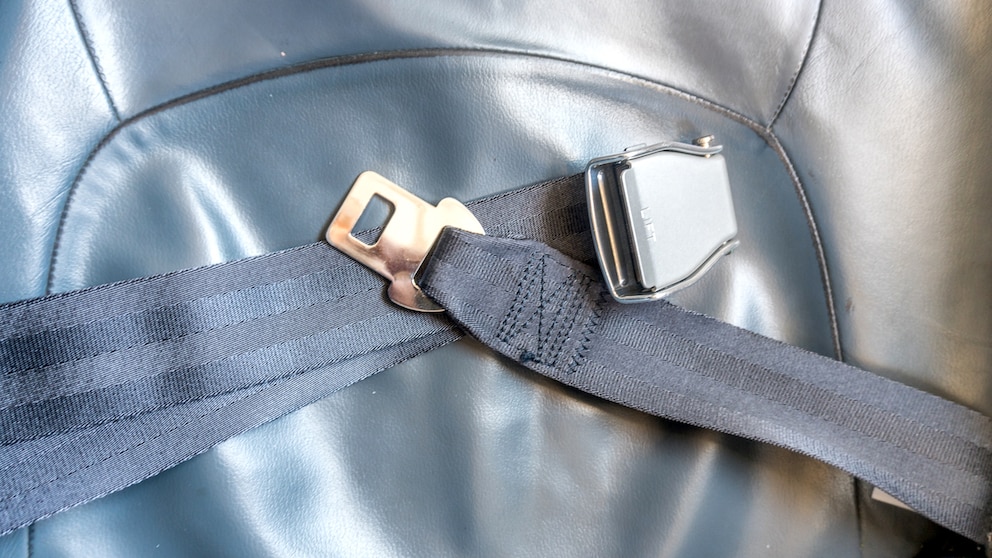February 15, 2025, 9:04 am | Read time: 4 minutes
A new airplane seatbelt hack is going viral, but despite all the promises of better sleep, it’s not a good idea. TRAVELBOOK explains the new travel hack and the reasons against it.
You slide back and forth uncomfortably, your head is constantly falling forward or to the side, and somehow, even with all kinds of contortions, you can’t find a good sitting position for sleeping on the plane. Do you experience this, too? Especially on long-haul flights, this can become a real torture. Some people wish they had spent more money to be able to sleep in first class. Some also invest a little more in comfort in the form of neck pillows, foot hammocks, and cushions. Others are trying out what is currently going viral on the internet: a seatbelt trick that experts are warning against.
What’s Behind the Seatbelt Trick?
It’s actually quite simple. Instead of putting your feet on the floor or stretching out under the front seat, you bend your legs and put your feet on the seat. And here’s the trick: the seat belt is then placed around the ankles. This prevents the feet from slipping off the seat while sleeping. You can then simply rest your head on your knees or on your side and perhaps get at least a little sleep. If you would like to see how the whole thing works, here is a video.
The seatbelt trick seems to be causing quite a stir, with many people already commenting on it on social media. In addition to some who say they are simply too tall, too wide, or too immobile for it, there are others who have discovered the new use of the seat belt for themselves or are keen to try it out. Still, others have a lot of criticism against the seatbelt trick. But what?
What Are the Arguments Against the Trick?
The news site CNN picked up on the viral seatbelt trick and asked various experts about it. These included the President of the Association of Flight Attendants-CWA, Sara Nelson. She told CNN that the new seatbelt trick was “extremely dangerous.” She explained that the seatbelt was designed to sit low and tight across the lap for a reason. This ensures the greatest possible protection in the event of turbulence, an emergency landing, or an accident. A social media user illustrates this in a video in which she shows what happens when turbulence is so strong that you are thrown up into the air (without a correctly fastened seat belt) – and hit your head, for example.
The expert on CNN also makes it clear that it’s not just about the seatbelt users themselves. “If you are not properly strapped in, you are likely to injure someone else in turbulence,” she warns.
In addition, the seatbelt trick is “a violation of federal regulations and crew member instructions. Stop doing it,” the news site quotes the expert as saying. Anyone who refuses to do so could face a fine of up to 35,000 US dollars. It would be cheaper to sit in first class.

Hygiene check Can you guess the location of the most germs on an airplane?

Best to avoid! The 5 worst seats on an airplane

10 valuable tips How to stay healthy on a plane
Blood Clots Due to Seatbelt Trick?
In addition to the risk of injury to themselves or others, users on social media are also concerned about a very specific risk: the risk of blood clots from tightly buckling their ankles. The expert interviewed by CNN, hematologist Dr. Nathan Connell, says: “It’s hard to say whether this alleged travel hack actually leads to blood clots, but I would be careful with anything that restricts blood flow because it can lead to an increased risk of blood clots.” He sees the risk, particularly in a possible leg or ankle injury, if the legs are trapped in the seatbelt during turbulence or an emergency. And this, in turn, could lead to a blood clot.
He advises anyone who is generally concerned about the risk of a travel-related blood clot to drink plenty of fluids, wear loose and comfortable clothing, and also to stand up and move around during the flight.

